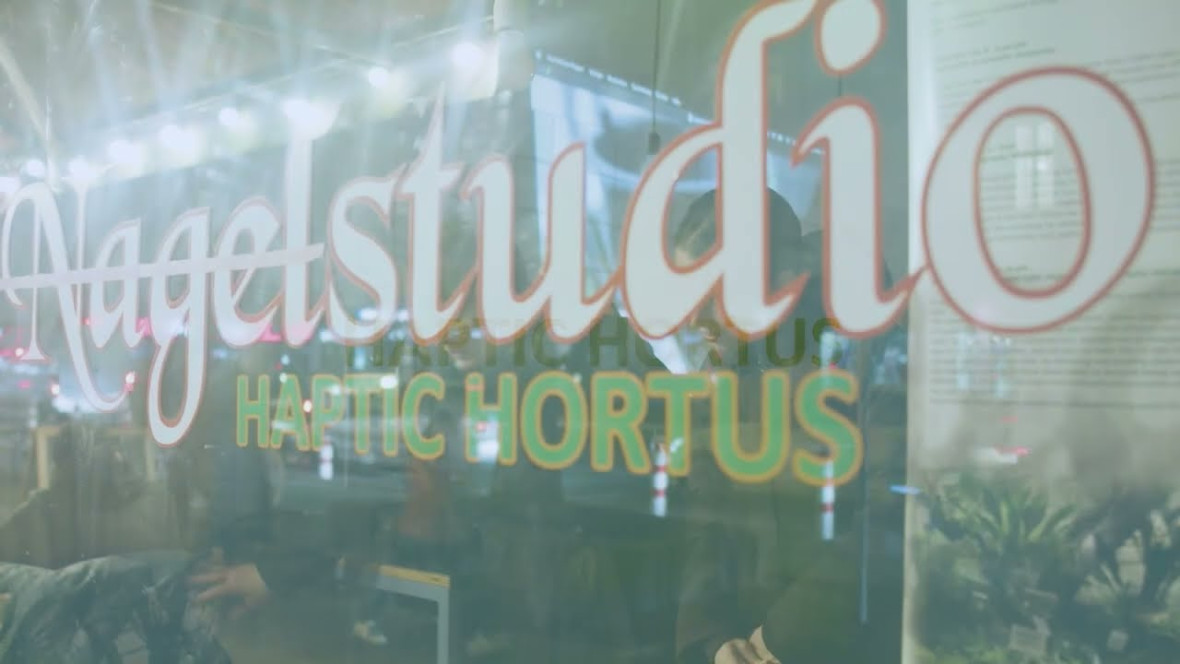Haptic Hortus in Berlin
15.11.2022
Plenty of people talk to their plants. But what about touching plants? Tracing the veins on their leaves, caressing their stems, holding them, moving them? And what about the many ways that plants - from trees to shrubs to water lilies and flowers - touch us? At the recent Berlin Science Week, anthropologist and artist Susanne Schmitt teamed up with community gardeners Prinzessinnengärten and natural building lab Dis+Ko to create a unique space: Haptic Hortus.
Haptic Hortus opened in a former nail salon amidst the bodegas, bars, and fast-food restaurants of Berlin’s bustling Neukölln district. Crowds gathered outside the salon on the opening night of Berlin Science Week, stopped in their tracks by the vision of a shimmering green aquarium teeming with algae and other aquatic lifeforms in the shop window.
Schmitt was on location on opening night to explain the multisensory installation to each group that visited the space behind the aquarium: Haptic Hortus brings stories and experiences of encounters between plants and humans at Berlin’s Botanical Gardens to a downtown site that holds complex histories of touch, too: a former nail salon nestled nearby the home of community-gardening collective Prinzessinnengärten. The installation was created in response to the findings of the ethnographic research project Touching Plants, hosted by Freie Universität Berlin.
The film loop shown at Haptic Hortus was shot at the botanical gardens. Led by anthropologists Prof. Sandra Calkins and Cornelia Ertl at the FU, the research project SFB Affective Societies: Touching Plants takes an ethographic approach to explore the affective dynamics between humans and plants in the Botanical Gardens and Botanical Museum (BGBM) in Berlin. The evening draws on their research with a special experience-based knowledge lab Moving Across Thresholds.
The videos show the gardeners going about their daily tasks. One of the gardeners can be seen standing waist-deep in water, cleaning, watering, and handling the cartwheel-sized pads of Amazonian water lilies, at times even resting stacks of notebooks on their sturdy forms.The gardeners' no-nonsense approach – their handling of the plants seems almost crude and transgressive at first glance – speaks of a deep understanding and knowledge of the plants in their care. It clear to viewers that this peculiar form of intimacy is rooted in experience and enables the plants to thrive and grow. Meanwhile, other plants featured in the film are so delicate and vulnerable that a far lighter touch is needed.
In the evening, a workshop with producer, sound artist and composer Felix Classen took place at the space. His work complements the vision and knowledge of participants and translates their haptic encounters with plants into an acoustic experience. Recordings from Victoria House at Berlin’s Botanical Gardens formed a a tapestry of sounds in the background.
Media
Haptic Hortus at Berlin Science Week 2022

Participants in the workshop added snippets of sound captured using hydrophones in two circular water basins containing aquatic plants. A contact microphone attached to the foliage of an orchid and a sensitive loudspeaker recorded other ambient sounds. With the aid of the research objects and exhibits, Classen and the participants created an improvised composition in real time that was based on people's interactions with the plants and set to Schmitt’s footage from the botanical gardens.
Listen to the composition created at the workshop here:

